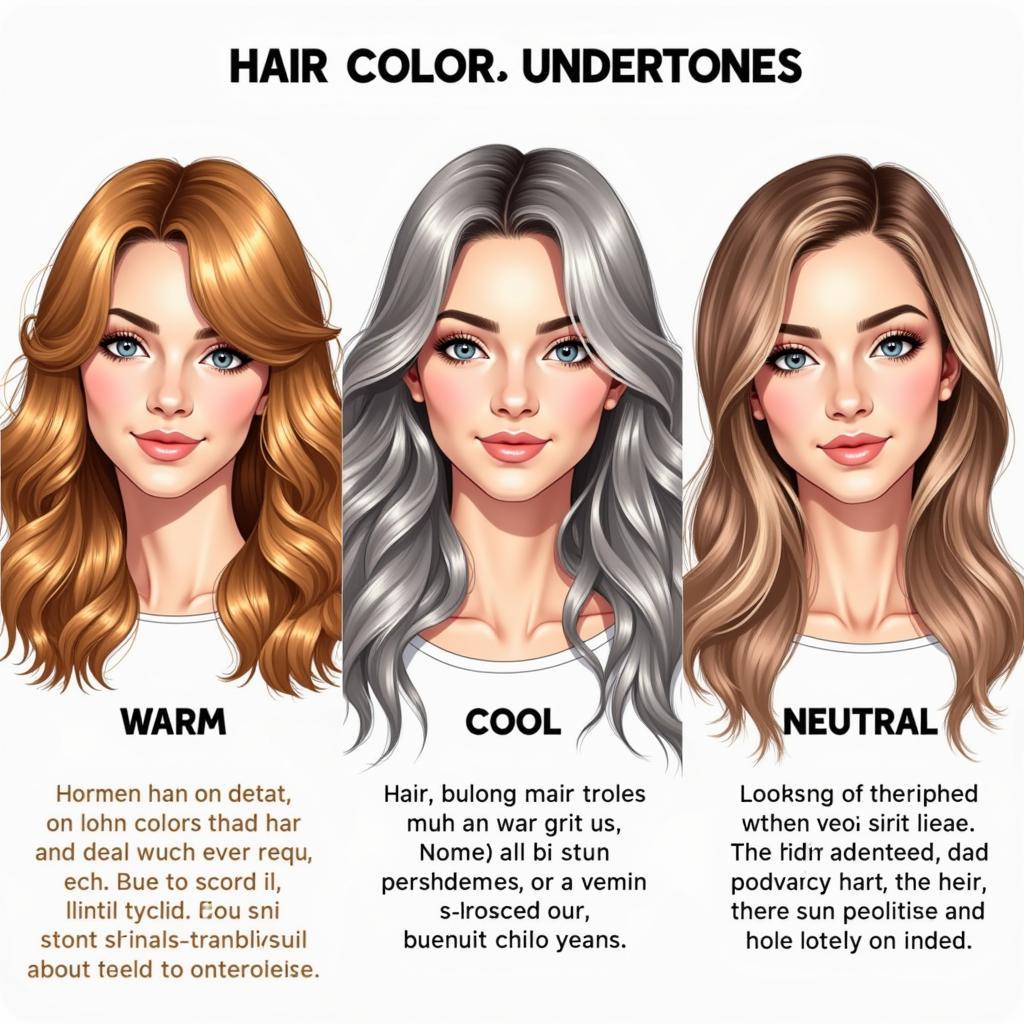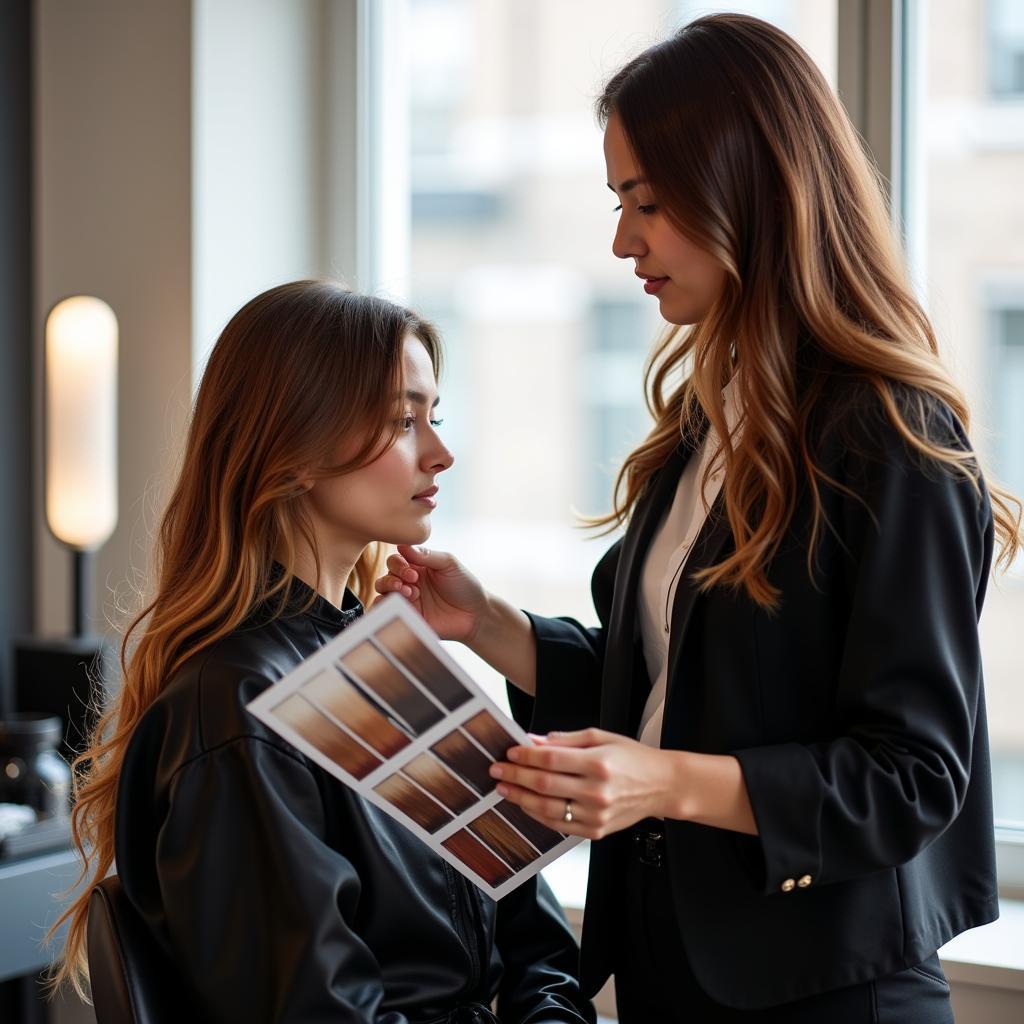Determining your natural hair color might seem straightforward, but several factors can make it trickier than you think. Lighting, hair products, and even previous color treatments can all influence how your hair appears. This comprehensive guide will explore various methods to help you accurately identify your true hair color. We’ll cover everything from examining your roots to understanding undertones and considering professional advice.
Have you ever wondered what color to dye your hair to best complement your natural shade? Check out this helpful guide: how do i know what color to dye my hair.
Examining Your Roots for Clues
The most reliable way to determine your natural hair color is to examine your roots. New hair growth at the scalp reveals your true color, uninfluenced by sun exposure or hair products. Look at your roots in natural daylight for the most accurate assessment. Compare your root color to a color chart or hair swatches available at beauty supply stores. This can help you pinpoint the specific shade.
Understanding Undertones: Warm, Cool, or Neutral
Beyond the basic color categories (blonde, brunette, red, black), undertones play a crucial role in defining your hair color. Undertones are the subtle hints of color beneath the surface, and they can be warm, cool, or neutral. Warm undertones often have golden, reddish, or copper hues. Cool undertones may appear ashy, bluish, or violet. Neutral undertones fall somewhere in between, lacking a distinct warm or cool cast. Identifying your undertone can be particularly helpful when choosing hair dyes or other hair products, as it helps determine which shades will complement your complexion and natural hair color best.
 Identifying Hair Color Undertone
Identifying Hair Color Undertone
How Can Previous Color Treatments Affect Your Perception?
If you’ve previously colored your hair, it can be challenging to remember your natural shade. Previous treatments, especially permanent dyes, can alter the pigment in your hair, making it difficult to discern your original color. In this case, looking at childhood photos can be helpful. Photos taken before any color treatments can provide a clear picture of your natural hair color.
What About Sun Exposure and Fading?
Sun exposure can naturally lighten hair, especially during the summer months. This lightening effect can mask your true hair color, making it appear lighter than it actually is. Similarly, frequent washing and styling can cause hair color to fade over time. To accurately assess your hair color, consider looking at your hair after it’s been shielded from the sun for a while and after minimizing styling and washing.
Consulting a Professional: The Expert Opinion
If you’re still unsure about your hair color after trying these methods, consult a professional hairstylist. Stylists are trained to identify different hair colors and undertones and can offer personalized advice. They can also help you understand how lighting and other factors might be affecting your perception of your hair color.
 Hair Color Consultation
Hair Color Consultation
“Understanding your natural hair color is the foundation for making informed decisions about hair coloring, styling, and even choosing the right makeup shades,” says renowned color specialist, Sarah Chen. “It’s all about finding harmony between your natural features and enhancing your overall look.”
Should You Use Online Hair Color Tools?
Several online hair color tools claim to help you identify your hair color. While these tools can be a fun starting point, their accuracy can vary. They often rely on user input and may not account for individual variations in lighting and hair texture. Therefore, it’s essential to use these tools with caution and combine them with other methods for a more accurate assessment.
Embracing and Enhancing Your Natural Hair Color
Once you’ve determined your natural hair color, you can embrace and enhance it. Whether you choose to maintain your natural shade or experiment with different colors, understanding your base color is key. It allows you to select colors that complement your complexion and create a harmonious overall look. “Knowing your natural hair color is empowering,” says celebrity stylist, Mark Johnson. “It’s the first step towards celebrating your unique beauty and expressing yourself through your hair.”
If you’re curious about what colors complement blue eyes, have a look at this article: what colors look good with blue eyes. You might also find this guide on restoring original skin color helpful: how can i get my original skin color back.
Conclusion
Knowing your hair color is more than just a simple observation; it’s about understanding the nuances of shade, undertones, and how external factors influence its appearance. By using the methods outlined in this guide, you can confidently determine your natural hair color and make informed choices about how to style and care for it. Remember, your natural hair color is beautiful and unique. How Do I Know What My Hair Color Is? By taking a closer look, you can unlock its true potential and celebrate its individuality. If you’re interested in changing your Bitmoji hair color, you can find information here: how do you change hair color on bitmoji.
FAQ
- Can my hair color change over time? Yes, hair color can change naturally with age or due to hormonal changes.
- Is it possible to have more than one undertone? Sometimes, hair can have a blend of undertones, making it appear more complex.
- How can I protect my hair color from fading? Using color-safe shampoos and conditioners and limiting sun exposure can help prevent fading.
- What if my root color is different from the rest of my hair? This is common if you color your hair. The roots reveal your natural color.
- Can stress affect my hair color? While stress can affect hair health, it doesn’t directly change the pigment of your hair.
- What’s the difference between warm and cool toned hair colors? Warm tones have golden, red, or copper hues, while cool tones are ashy, blue, or violet.
- How can I find a qualified hairstylist to help me with my hair color? Seek recommendations from friends or look for stylists specializing in color.
Need support? Contact us 24/7: Phone: 0373298888, Email: [email protected], Address: 86 Cầu Giấy, Hà Nội.

